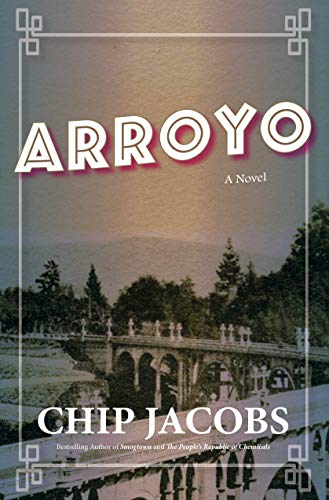Arroyo: A Novel
Pasadena’s Colorado Street Bridge was a marvel of its time. Built in 1913, it was the tallest concrete bridge and the first curvilinear bridge ever built. Even today it is considered to be a civil engineering landmark. The bridge spans Arroyo Seco canyon, site of the first Busch Gardens, created by Adolphus Busch in 1904, and the Cawston Ostrich Farm opened in 1886.
Arroyo reprises the construction of the bridge, visits Busch Gardens, takes readers on ostrich rides, and meanders the streets of the city via its principal characters—Nick Chance and his canine pal, Royo. Nick is onsite attempting to develop solar-powered lamps that may illuminate the bridge’s 1486 feet. Royo is a savvy traveler, sandwich stealer, and apparent mind-reader.
The novel raises concerns about the undergirding of the bridge’s construction: tight building deadlines, a political push for property annexation, disagreements about design and stability. The book lacks focus, however. Instead of presenting a powerful tale of greed, corruption, and vanity, the story is limited by presenting only one perspective—Nick’s. The result is improbable encounters with legendary figures of the time: happening to sit next to and chatting up novelist Upton Sinclair on Pasadena public transportation, for example; and questionable historical context: while sunlight as a possible power source was known in the late 1880s, it was nothing more than an experiment for another 100 years.
The novel also shifts time periods. While the lion’s share of the action is set in 1913, Nick and Royo also appear in Arroyo Seco in 1993. The connection between the time periods was lost, at least to this reader.
While descriptions paint vivid pictures of the early days of Pasadena, Arroyo does not fully satisfy the appetite for straightforward storytelling.










